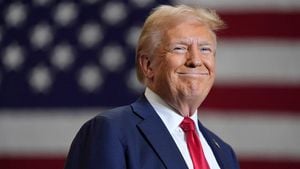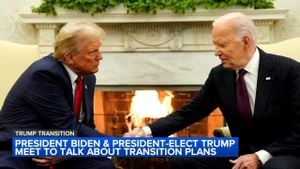The images of war often conjure thoughts of armored tanks rumbling across battlefields, embodying the might and strategy of military campaigns. But what if those tanks were just mere replicas, crafted for the silver screen? That’s precisely the peculiar situation facing Russian President Vladimir Putin amid the intense conflict in Ukraine. Reports have surfaced detailing how the Kremlin has resorted to using movie prop tanks as part of its military efforts, raising eyebrows and questions about the actual strength of its armed forces.
According to reports, Putin recently received 28 T-55 tanks, eight PT-76 tanks, six combat vehicles, and eight tractors, all pulled from the storied warehouses of Mosfilm, Russia’s illustrious film studio. This cinematic rescue is not just bizarre; it has sent shockwaves through military circles and led to widespread ridicule online.
The use of these prop tanks strikes many observers as desperate, highlighting the challenges facing Russia as its invasion of Ukraine drags on. With their origins rooted in entertainment rather than engineering, these vehicles are reminiscent of the kinds of props you’d find on Hollywood sets rather than actual battlefields. Critics of the Kremlin have seized upon this development to criticize the government's military strategies, calling it emblematic of the resourcefulness—or lack thereof—of the Russian military.
The T-55 tanks, iconic relics from the Soviet era, are far from the state-of-the-art machines seen on today’s battlefields. While they have been pivotal during past conflicts, their age means they lack modern technology and survive primarily on nostalgia rather than combat effectiveness. The PT-76, meanwhile, is recognized as the first mass-produced amphibious tank from the Soviet Union, but its capabilities now seem more suited for nostalgic parades or movie scenes than the actual rigors of war.
This unconventional move to enlist props from the film industry showcases the extent of Russia's logistical challenges as the war with Ukraine continues. Analysts worry this may indicate the Russian military is increasingly turning to unorthodox sources as it struggles to replenish its dwindling supplies. Reports suggest Ukraine has inflicted heavy losses on Russian armored divisions, compelling the Kremlin to resort to such drastic measures to present any semblance of military strength.
Humor and disbelief quickly followed the reveal of the movie prop tanks, as social media erupted with memes and jokes. Many mocked the absurdity of the situation, arguing this move might not instill fear or respect among forces on the ground. Instead, it serves as fodder for mockery, reflecting on the ever-shifting narrative of the war.
Meanwhile, Ukraine has been quick to capitalize on Russia's missteps, showcasing the resilience and tenacity of its own forces. The conflict has forced many nations to reassess their military assets and strategies, with commentary highlighting how regardless of the technology or resources one possesses, the will to defend one’s homeland remains the most potent weapon.
International observers have noted how the war has shifted from battles over territory to battles of perception. The use of these prop tanks doesn't merely reflect the state of Russia's military; it also indicates how public perception shapes geopolitical power dynamics. Countries are now engaged not just on battlefields but also in the digital arena, where information and images can sway public sentiment and, by extension, foreign policy.
The development has stirred discussions around the effectiveness of traditional military doctrine and the adaptability required to engage effectively on modern battlefields. With military resources strained and public perception at stake, Putin’s use of movie props could signal a sad chapter in the saga of Russia's military ambitions.
Despite the oddity of the situation, experts caution against viewing these developments as mere farce. Even movie props can inflict harm with the right weaponry. Each day of conflict deepens rifts and complicates any possible future resolution. The use of mundane tanks to represent military strength adds to the bizarre nature of the conflict, giving observers pause to think about the surreal realities of modern warfare and the lengths to which states will go to project power.
Throughout the past few years, the narrative surrounding the Ukraine conflict has been marked by unexpected twists and narratives steeped in ironies. By turning to movie props, Russia not only raises questions about its military readiness; it also highlights the complex interplay between image, illusion, and reality on the battlefield. The blend of Hollywood fabrication and real-life conflict showcases the struggles of modern warfare, where perception and reality seem to waver like the flickering lights of the film industry.
On the global stage, this unprecedented pivot to using movie props raises important questions. What does this say about the condition of Russia’s military and its ability to sustain prolonged conflict? Will other nations begin to explore unconventional methods to bolster their military presence, perhaps as part of propaganda efforts? These broad questions linger as the world watches closely, awaiting the next acts of this tragic drama.
One thing remains clear: the use of movie prop tanks speaks volumes not only about strategic choices but about the cultural narratives at play. They reflect the blending of fantasy and reality—an era where even the most serious conflicts can feel scripted, driven by narratives shaped more by perception than actual might.
The unprecedented use of mock military assets blurs the line between reality and spectacle, pushing observers to grapple with how much of this conflict has become performance art. Given the unpredictability of this war, it becomes pivotal for global audiences to remain discerning, recognizing when to draw the line between fact and fiction, even as history becomes entangled with the whims of the film industry.
Putin’s reliance on militarized versions of cinematic props may serve as the final act of bravado, or the beginning of a farcical chapter. What the future holds for these movie-inspired tanks—and the real-life consequences they carry—might yet turn out to be one of the most extraordinary twists of this tumultuous narrative.



